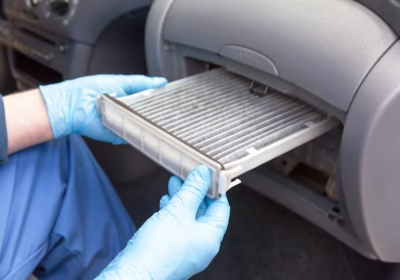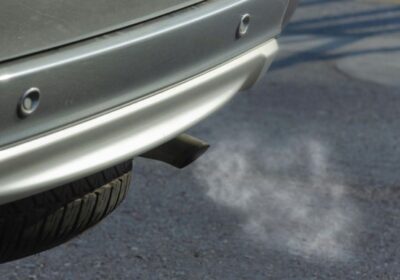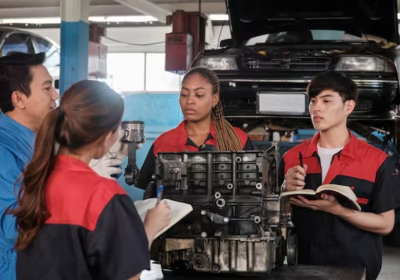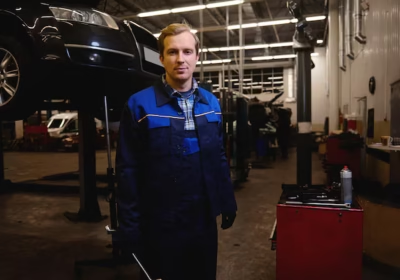Benefits of Proper Tire Balance and Alignment for Everyday Drivers in 2024

Ensuring your vehicle’s tires are properly balanced and aligned is crucial for a smooth and safe driving experience. As we continue to advance in automotive technology in 2024, the importance of these maintenance tasks remains as significant as ever.
What is Tire Balancing?
Tire balancing is a key part of vehicle maintenance. It involves adjusting the weight around the vehicle’s wheels. Its main job is to ensure that the tires spin smoothly at high speeds. This reduces vibrations. These vibrations can cause uneven tire wear, damage to suspension, and less driving comfort. You can feel a vibration in the steering wheel, seat, or floor at certain speeds. It often happens between 50 and 70 mph. This vibration means your tires need to be balanced. Other signs include uneven tire wear and a humming or buzzing sound when driving. Balancing tires often extends their life and boosts fuel efficiency. It also improves your driving experience.

Benefits of Tire Balancing
Tire balancing has many benefits. It ensures that weight is equally distributed around the wheel. First and foremost, it dramatically increases tire life. Uneven weight distribution can wear out some parts of a tire faster than others. This can make you replace the tire early.
Secondly, balanced tires help to improve fuel efficiency. Your vehicle needs less energy to drive forward when the tires are evenly balanced because they offer less resistance as they rotate. This directly translates into higher fuel efficiency.
Balancing also make your tires safer. It reduces the risk of blowouts that can be deadly at high speeds.
Finally, it provides a smoother and more enjoyable driving experience. Vibrations and rough rides are signs of imbalance. Fixing them can greatly improve the driving experience.
What is Wheel Alignment?
Wheel alignment, also known as tire alignment, adjusts a vehicle’s suspension. The suspension connects the vehicle to its wheels. It is not necessary to alter the tires or wheels themselves, but rather how they meet the road.

Proper wheel alignment is critical. It ensures that your vehicle performs well and leads to safe and efficient driving. Uneven tire wear, tugging to one side, or the steering wheel being off-center when driving straight are all signs of misaligned tires. They show that your car may need an alignment check.
Keeping your car correctly aligned is vital. It’s not just about making tires last longer. It’s also about keeping your vehicle safe and driving well.
Regular Tire Alignment for Better Driving
Proper wheel alignment is not just a technical requirement, it is the basis for a smoother, safer driving experience. When your vehicle’s wheels are aligned correctly. You’ll feel an instant improvement in control and stability. This precision allows smoother turns. It also gives better control on many roads. It greatly improves driving comfort and safety.
Proper wheel alignment reduces resistance when your vehicle is moving. This results in big fuel efficiency increases. It also assures even tire wear, which saves money on tire replacements and keeps tires in good condition for longer.
Most importantly, alignment helps to improve safety by lowering the chance of accidents caused by poor handling. Getting your car properly aligned is an investment in its performance and your peace of mind on the road.
Tire Balancing and Alignment: A Comparative Insight
Tire balancing and alignment are two sides of the same coin, and both are required to keep your car running at its best. Tire balancing spreads the weight of the tire and wheel assembly evenly. This helps them rotate smoothly at high speeds. Wheel alignment changes the angles of the tires. It makes sure they have the best contact with the road. These procedures complement each other. Balancing cuts vibration, while alignment saves tire wear. They also boost fuel efficiency and safety. Neglecting either might result in increasing driving discomfort and potentially expensive repairs. As a result, adding tire balancing and
alignment to your vehicle’s maintenance is critical. It provides a smoother ride and makes your tires last longer.
DIY vs. Professional Services
When it comes to tire alignment and balancing, leaving it to the professionals is essential.
These tasks require specialized equipment and expertise that cannot be replicated at home. Professional technicians use advanced machinery to make precise adjustments, ensuring even tire wear, optimal handling, and improved fuel efficiency. Without these tools and knowledge, DIY attempts can lead to incorrect adjustments, resulting in increased tire wear, reduced fuel efficiency, and compromised safety.
Relying on professional services guarantees that your vehicle receives the highest level of care. Technicians are trained to diagnose and correct issues accurately, ensuring your vehicle’s longevity and performance. This not only extends the lifespan of your tires but also reduces wear and tear on other critical components like the suspension and steering systems. Trusting professionals for tire alignment and balancing provides peace of mind, knowing your vehicle is in optimal condition, enhancing your driving experience and protecting your investment.
Cost Considerations
Investing in frequent tire balance and alignment is proactive vehicle maintenance. Initially, some drivers may see these services as extra costs. However, the long-term savings may be enormous. Regular maintenance helps to minimize costly future repairs, such as premature tire replacements and increased wear on vehicle components. Properly aligned and balanced tires also improve fuel efficiency, which reduces costs over time. In essence, the initial expenditure in these services returns rewards by extending the life of your tires and vehicle while optimizing fuel efficiency, making it a sensible financial option for 2024 and beyond.
#1 Tire Service Shop in Kamloops, BC
Related Posts

The Importance of Replacing Your Cabin Air Filter
Maintaining your vehicle might seem like a daunting task, but some aspects of it are simpler than you might think. One critical yet often overlooked component to maintain is the cabin air filter. In this blog post, you'll learn why…

How to Tell if Your Exhaust System Has a Leak
Think your car might be louder than usual lately? Noticing strange smells or poor fuel economy? These could be signs that your exhaust system leaks, and ignoring it can lead to bigger problems down the road. Knowing how to spot…

5 Reasons Your Check Engine Light Might Be On
There’s nothing quite as unsettling as driving down the road, minding your own business, and suddenly spotting that dreaded orange glow on your dashboard—the check engine light. Is it a minor glitch or the sign of a serious problem? That…

How to Spot a Brake Problem Before It Becomes Dangerous
When you're cruising through Kamloops—whether it’s a scenic drive along the Thompson River or just running errands downtown—the last thing you want is a brake problem sneaking up on you. Brakes are your vehicle’s most important safety system, and even…

The Real Cost of Skipping Routine Oil Changes
Oil changes might seem like one of those “maybe later” car maintenance tasks, but putting them off can come at a much steeper price than you think. At first glance, it might feel like you're saving money by skipping an…

How to Create a Custom Maintenance Schedule for Your Driving Habits
What if your car could tell you exactly when it needed service, not just based on a sticker or a guess, but on how and where you actually drive?Most of us rely on factory-recommended service intervals or wait until something…

Common Headlight Problems in and How Restoration Can Help
Whether you’re commuting through the heart of Kamloops or heading out on a road trip through British Columbia’s scenic routes, your headlights are essential to staying safe. They light the way in low visibility, alert other drivers to your presence,…

A Complete Guide to Wheel Alignment Inspections for Car Owners
Wheel alignment is an important part of car maintenance. It helps your car drive smoothly and keeps your tires from wearing out too fast. It also makes sure your car is safe to drive. If your wheels are not aligned…

Pre-Purchase Inspections: Your Essential Checklist
Buying a car is a significant investment, and ensuring you make the right choice requires thorough preparation. Pre-purchase inspections and pre-purchase maintenance are vital steps that can save you from costly mistakes, giving you peace of mind and confidence in…

Transmission Service Checklist for Optimal Vehicle Performance
Imagine driving down the highway, everything running smoothly, when suddenly your car hesitates. The gears grind, the engine revs, but the wheels don’t respond as they should. This is often the result of a neglected transmission, a critical component that…

Expert Tips for Maximizing the Lifespan of Your Auto Air Conditioning System
Keeping your auto air conditioning system in great working condition isn’t just about staying cool, it’s about comfort, efficiency, and saving money in the long run. Whether you’re commuting in Kamloops’ summer heat or taking a scenic road trip, a…

6 Reasons Why You Shouldn’t Skip Your Next Oil Change
Oil changes keep your engine running smoothly and help prevent major problems down the road. Ignoring this maintenance can lead to expensive repairs, reduced fuel efficiency, and even shorten your car’s lifespan. In this blog, we’ll discuss six key reasons…

Expert Tips for Finding a Reliable Coolant Leak Repair Service
Coolant, also known as antifreeze, plays a crucial role in keeping your engine at the right temperature, especially during extreme heat or cold. It circulates through your engine, absorbing heat and preventing it from overheating. Given the risks associated with…


